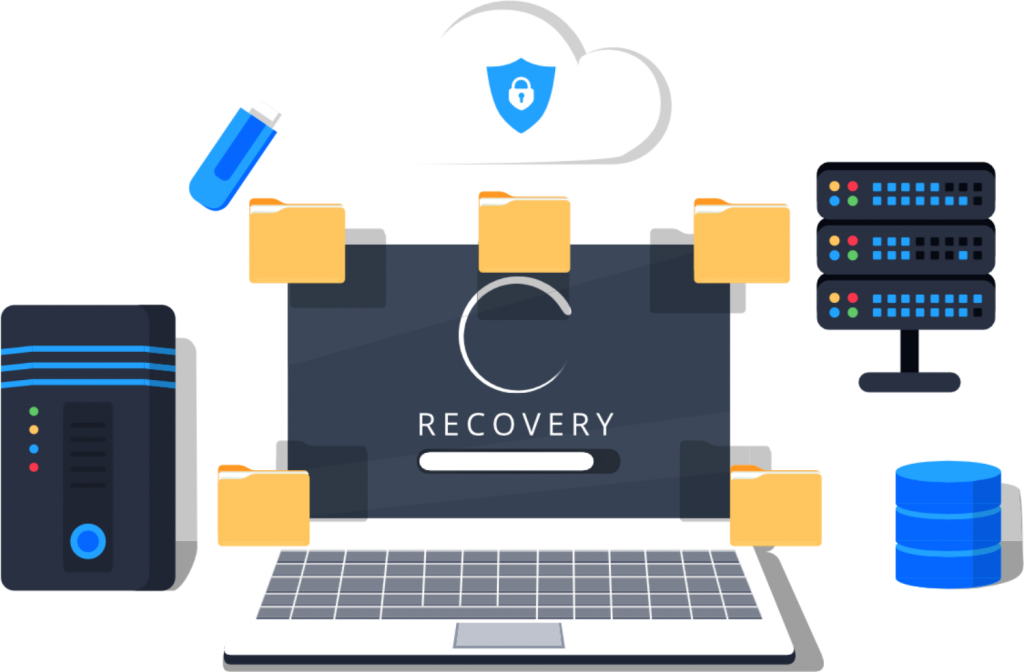The most common data recovery scenarios involve an operating system failure, malfunction of a storage device, logical failure of storage devices, accidental damage or deletion, etc. (typically, on a single-drive, single-partition, single-OS system), in which case the ultimate goal is simply to copy all important files from the damaged media to another new drive. This can be accomplished using a Live CD or DVD by booting directly from a ROM instead of the corrupted drive in question. Many Live CDs or DVDs provide a means to mount the system drive and backup drives or removable media, and to move the files from the system drive to the backup media with a file manager or optical disc authoring software. Such cases can often be mitigated by disk partitioning and consistently storing valuable data files (or copies of them) on a different partition from the replaceable OS system files.
Data recovery
In computing, data recovery is a process of salvaging deleted, inaccessible, lost, corrupted, damaged or formatted data from secondary storage, removable media or files, when the data stored in them cannot be accessed in a usual way. The data is most often salvaged from storage media such as internal or external hard disk drives (HDDs), solid-state drives (SSDs), USB flash drives, magnetic tapes, CDs, DVDs, RAID subsystems, and other electronic devices. Recovery may be required due to physical damage to the storage devices or logical damage to the file system that prevents it from being mounted by the host operating system (OS).

Physical damage
Most physical damage cannot be repaired by end users. For example, opening a hard disk drive in a normal environment can allow airborne dust to settle on the platter and become caught between the platter and the read/write head. During normal operation, read/write heads float 3 to 6 nanometers above the platter surface, and the average dust particles found in a normal environment are typically around 30,000 nanometers in diameter.[1] When these dust particles get caught between the read/write heads and the platter, they can cause new head crashes that further damage the platter and thus compromise the recovery process. Furthermore, end users generally do not have the hardware or technical expertise required to make these repairs. Consequently, data recovery companies are often employed to salvage important data with the more reputable ones using class 100 dust- and static-free cleanrooms.[2]
Recover deleted files from the Recycle Bin
The first thing you should do is check the Windows’ Recycle Bin if you’ve just deleted something you didn’t mean to. When you select a file and press the Delete key (or right-click and choose the Delete option from the menu), Windows makes no attempt to delete it at all.
Instead, it moves it to the Recycle Bin, which has its own icon on the desktop. Restoring a file from the Recycle Bin is a simple matter of double-clicking on the desktop icon to display the contents and then right-clicking on the file and selecting Restore from the menu.
If the Recycle bin icon isn’t there, search in the Start menu for ‘Show or Hide’ and you should see a shortcut to the settings where you can tick the box next to the Recycle Bin and make it appear.

Free vs paid data recovery software
Here are some free options. Recuva – from Piriform – tends to be the go-to option for many people.
- Recuva
- Paragon Rescue Kit 14 Free
- CGSecurity PhotoRec
- Minitool Partition Wizard Free Edition 12.0
- Kroll Ontrack EasyRecovery Free
- TestDisk
On some occasions, a free tool is all you’ll need. But many of these have limited power for recovering files, or are limited in the number of files or the amount of data they will recover before you have to pay for their more powerful, deeper-scanning versions. Often, these premium versions can find and restore files that the free versions can’t. For example, if you format a hard drive (the long option, not the Quick one) then you might find free recovery software can still get the files back.
 Laptop,Business Laptop,Gaming Laptop,Laptop Provider in India Laptop,Business Laptop,Gaming Laptop,Laptop Provider in India
Laptop,Business Laptop,Gaming Laptop,Laptop Provider in India Laptop,Business Laptop,Gaming Laptop,Laptop Provider in India